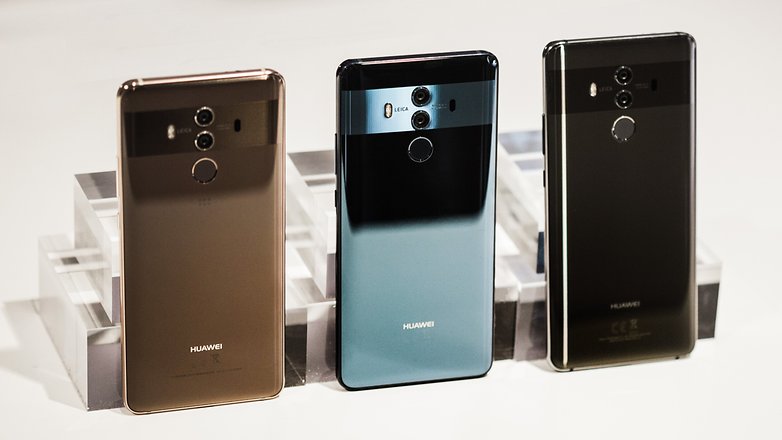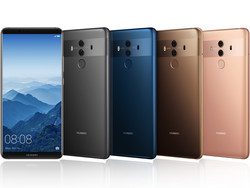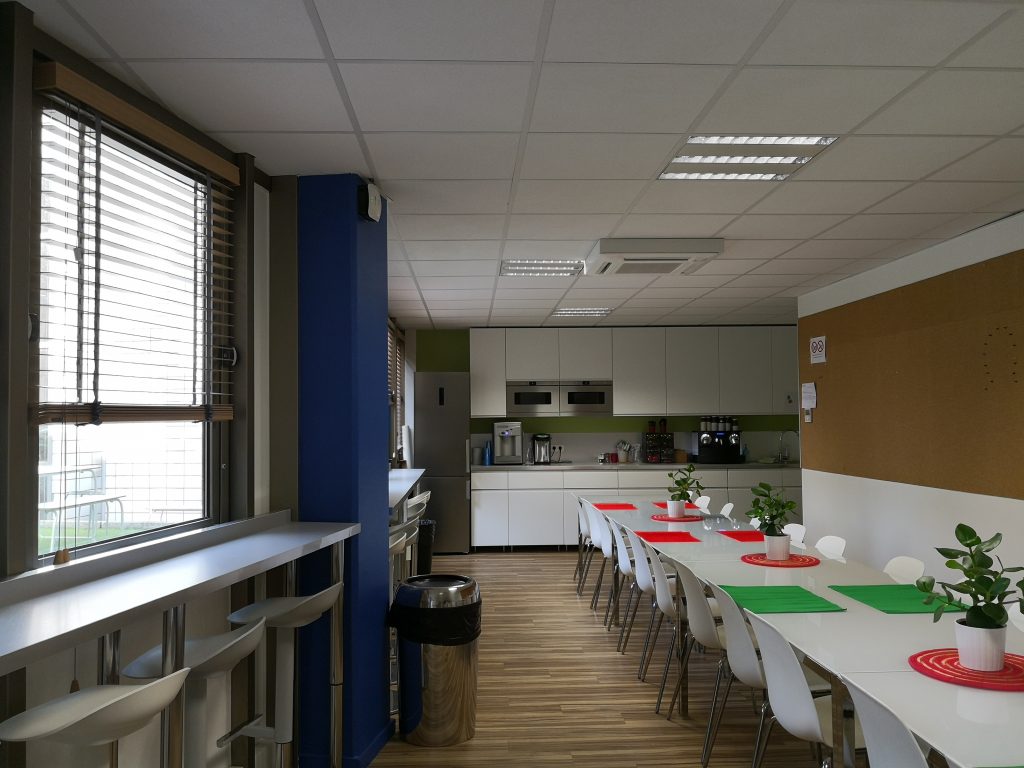
Table of Contents
For 2017, Huawei bumped up the screen size in the Huawei Mate 10 Pro model to 6 inches, shrank the bezels and maximized the battery life. But the biggest change is the Kirin AI processor, which enables real-time objection recognition in the camera, in addition to blazing-fast performance. This device is one of the most ambitious smartphones of the year, and a worthy alternative to Samsung’s Galaxy Note 8.

When its specs are laid out alongside the rest of the flagship competition, the Huawei Mate 10 Pro even wins out in some key areas. For starters, it offers more storage – 128GB as standard vs 64GB on other flagships.
It also has a beefier battery than the competition – a huge 4,000mAh, compared with, 3,300mAh in the Samsung Galaxy Note 8 and under 2,691mAh in the iPhone 8 Plus.
The Mate 10 Pro even has an IR blaster for some added nostalgia-factor, meaning it can double up as a TV remote control for those times you’re trying to spook your mates in the pub, or simply can’t find your own.
Specifications
You can read full phone specifications along with price here.
Design & Build: Shiny & Pretty
The Huawei Mate 10 Pro sandwiches a polished-metal frame between two slabs of curved Gorilla Glass 5, with minimal bezels all around. The Mate 10 Pro’s screen-to-body ratio is around 80%, which puts it ahead of the likes of the Google Pixel 2 XL and LG G6 on that front, and not far behind Samsung’s finest.


There’s no notch cutting into the screen as on the Apple iPhone X, – just a thin strip above it holding the front camera, flash and top speaker, and an equally miniscule one at the bottom with the Huawei logo on it. It really does look suitably futuristic from the front, and is the equal of any 2017 phone.

Along the bottom edge, you’ll find a USB-C port next to one of two stereo speakers (the other doubles as the earpiece up top), and an IR blaster on the opposite side. Most devices don’t feature IR blasters anymore, so the Mate 10 Pro is one of your only options if you want your next smartphone to double as a TV remote. Still, we would have preferred a 3.5-millimeter headphone jack up there instead, as you won’t find that jack anywhere on the device.

The body of the Huawei Mate 10 Pro consists of an aluminum frame, with the front and back made from Corning Gorilla Glass 5. The Phablet is offered in the colors dark gray (Titanium Grey), brown (Mocha Brown), blue (Midnight Blue), and pink (Pink Gold). In Germany the pink model is not available, and Mocha Brown is offered exclusively by Vodafone.

Around the back, you’ll still find centrally mounted, Leica-branded dual cameras. This time, they’re set in a reflective band that encompasses the entire module, including the flash and sensors. It’s a distinctive bit of flair that really lifts an otherwise-stoic aesthetic. Right below the camera module is the rear-mounted fingerprint sensor, which is lightning fast — so quick, in fact, that I’d prefer some kind of haptic feedback as a sign of confirmation that it’s done its job.
With its 7.9 mm thickness, the smartphone is slightly slimmer than the larger Galaxy Note 8, but thicker than the V30. The two camera lenses stick out of the case by 0.55 mm. The workmanship appears very high-quality. The gaps are very narrow and even everywhere. The Mate 10 Pro does not react to any attempts of twisting it. The SIM slot is flush with the case. In our brown model, it does not have the same color tone, but is visually not too different from the color of the frame. The card tray is also made from aluminum and has the same color as the frame. It offers space for two Nano-SIM cards. There is no expansion option via microSD.
Just like the iPhone 8 and Google’s Pixel 2, the Mate 10 Pro benefits from IP67 water and dust resistance, protecting the handset for 30 minutes in up to 3.3 feet of submersion.
Display & Speakers
The Huawei Mate 10 Pro’s screen is its defining characteristic. It’s what sets it apart from the standard Huawei Mate 10, which sticks with the traditional 16:9 panel, and it’s what you’ll spend most of your time looking at.

What you get here is a 6 inches, 2160 x 1080 OLED, with a pixel density of 402 ppi and an 18:9(2:1) aspect ratio. You might think that resolution sounds a little low these days, and you’d be right – once you factor in the extra height, it’s merely full HD, whereas the standard Mate 10 has a 2K panel. But don’t worry too much about that, because in real-world use it’s plenty sharp enough. And besides, once you look at it you won’t be worrying about detail, because you’ll be too busy marveling at the rich colours.
The Mate 10 Pro’s not-so-secret weapon is its OLED display tech. It really just leaves LCD for dead here: the standard Mate 10 may have the higher resolution, but the extra contrast and punchier colours you get with OLED gives the Pro the advantage.
The brightness of the panel even beats the top of the class Galaxy Note 8, achieving up to 659 cd/m² on a pure white background, with the surrounding-light sensor activated. With a uniform distribution of dark and light areas (APL50), it is even 897 cd/m² in the center of the display. If you deactivate the brightness sensor, you have a maximum of 416 cd/m² available.
You can also configure an Always-On display, but it first needs to be activated in the settings and is called “Always show information.” Since this is an OLED display, Pulse Width Modulation is used to reduce the brightness. The frequency always fluctuates between 211 and 271 Hz and thus is not particularly high. Anyone having problems with other OLED screens will not fare much better with Huawei’s product. The amplitude itself is relatively flat and is on the same level as the displays of the Galaxy smartphones.
The Mate 10 Pro is HDR10 compliant, but I couldn’t get either Netflix or YouTube to display HDR content. Hopefully they’ll both arrive via a software update. Huawei does pre-install a HDR video on the phone, and I can confirm that it looks very lovely indeed, but really it’s hard to judge until I’ve used it properly in the wilds of the internet. I’ll update this review once I have.
Overall it’s a great screen. The extra space you get with the 18:9 ratio makes web browsing and game-playing a delight, and while not every app natively displays full-screen in these dimensions, you can force them to adjust; I’ve routinely done so with no ill effects.
Audio-wise it’s a little more mundane. The two speakers do a decent enough job for podcasts and the like, and go fairly loud, but there’s no real bass to the sound and it’s not proper stereo as on the Google Pixel 2.
Camera: AI-assisted shooter creates brilliant portraits
The dual camera on the back offers a 12-MP RGB sensor as well as a 20-MP monochrome sensor. The camera has been developed in cooperation with Leica and offers the more light-sensitive Summilux lenses (H 1:1.6 / 27 ASPH), both of which have an aperture of f/1.6. However, the optical image stabilization is limited to the RGB sensor. The second monochrome optics are supposed to ensure more detailed images in low light by combining the information from the second sensor with that of the first. You can also take pure black-and-white images, which compel with a high contrast and dynamic.

Also impressive, the Mate 10 Pro is Huawei’s first smartphone to launch with a dedicated chip for handling artificial intelligence, called the neural network processing unit (NPU). The phone’s cameras leverage this unique resource through object recognition by tuning exposure parameters when they identify certain things. There are 13 identifiable scenarios in total, including faces, flowers, plants, food, dogs and cats, and Huawei says it will add more if necessary in future updates.






The image quality is really good and shows no real weaknesses during daylight. The details and shadings are reproduced excellently. Even though the dual hybrid zoom is digital, the results are very good. The details and sharpness are fitting, but the color reproduction could be a little sharper and more natural. In the latter, the Note 8 and the OnePlus 5 have an advantage with their additional zoom lens. However, this changes in weak light conditions, since the performance of the competition drops considerably, and the Mate 10 Pro still manages to produce the same quality.
I focused the camera on a document, and the app responded by presenting a little “T” icon below the viewfinder, signifying that the camera was in text mode and had recognized what it was seeing. The phone then sharpened the image, slightly boosted the contrast, and opted for a cooler white balance to improve clarity and help separate the print from the paper.

While shooting video, it’s best to stick with the highest resolution – that’s 4K 3840 x 2160. That’s because you’ll get the best results there, as details are rich, the focus is spiffy, and there’s not a whole lot of artifacting when moving around. What’s strange, however, are the poor results with 1080p capture. Details are softened too much, making them unappealing. While it’s nice that stabilization can be enabled with 1080p capture, we really wish there was a bit more sharpness and detail in the video. Under low light at 4K or 1080p, it struggles with its choppier capture and smeary looks.
There is 8-MP camera in front, which has a fixed focus and with an aperture of f/2.0 is nominally less light-sensitive than its predecessor. Videos can be recorded in Full HD and stereo sound. There is also electronic image stabilization. Even in low light, the camera still proves itself surprisingly light-sensitive. In daylight, the optics produce good results. In addition, there is a ten-step Beauty mode and a Bokeh mode.
Overall, the Mate 10 Pro is a stunning performer when it comes to still shots. The dual-camera system delivers sharp-looking photos with the help of its scene recognition system. For video, it’ll suffice just as long as you stick with 4K capture.
Performance: Huawei’s in-house chip is a winner
Unlike the majority of Android flagships powered by Qualcomm Snapdragon chipsets, the Mate 10 Pro employs Huawei’s own Kirin 970 silicon. But in typical usage, you’d never know there was any difference; the device performs just as flawlessly as the best phones available this year.
The performance cluster uses ARM Cortex A73 cores each with a clock speed of up to 2.4 GHz. The second cluster consists of A53 cores with up to 1.8 GHz. Although nothing has changed in the cores, the greatest change can be found in the manufacturing technology. While the Kirin 960 was manufactured in 16 nanometers, the 970 now uses 10 nm. The GPU has received an upgrade, and there is now an ARM Mali-G72 with 12 cores in the Mate 10, which promises more performance as well as improved efficiency compared to the G71 model. The system is supported by an ample 6 GB of LPDDR4x working memory.
The Mate 10 Pro achieved a multi-core Geek bench 4 score of 6,784, edging out the Pixel 2, at 6,282, and Note 8, at 6,564. However, it was slightly off the mark in the Ice Storm Unlimited 3D graphics test, in which the device notched a result of 31,908 and Note 8 achieved 39,834.

Still, the 6 GB of RAM in Huawei Mate 10 Pro kept things humming at a reasonable clip, and we didn’t encounter any lag when switching between apps, using multi-window mode or snapping photos all day. The phone does get quite warm while charging.
For a real-world test, we had the Mate 10 Pro transcode a 4K video file into 1080p using the InShot app, then compared its time against the Galaxy Note 8. The Huawei finished the task in 58 seconds, a little faster than the Samsung at 1 minute and 4 seconds.
There’s also the Neural processing unit (NPU) to talk about. Huawei’s co-processor is the first in an Android phone built specifically for handling AI. Huawei says the chip will keep the Mate 10 Pro running as smoothly two years into its lifespan as it does the day it’s taken out of the box.
There is also 128 GB of internal storage for the users of the Huawei Mate 10 Pro. This is twice as much as the usual standard of the competition in this device class. On the other hand, there is no option to expand the storage via a microSD card anymore. However, the speed is excellent and is on the level of UFS 2.1 storage. Unfortunately, this is not the only kind of storage that is used, but it is also possible that the Mate 10 Pro may be equipped with the slower UFS 2.0 storage.
After the first system start, there is still 108 GB available to the user. Unfortunately the firmware, which was already quite large in the Mate 9, has grown further and is now using a hefty 16.56 GB. The Porsche Design variant of the Mate 10 (256 GB) even uses up 25.39 GB.
Battery: A Massive One
Huawei Mate 10 Pro boasts a large 4000 mAh battery. The manufacturer specified a battery life that would be 30% longer than that of the Mate 9.
It delivered 14 hours and 33 minutes of web surfing on LTE network, good enough to beat the Note 8 by more than 3 hours. Among premium flagships, the Pixel 2 XL lasted 12:09 and the iPhone X 10:49. The iPhone 8 Plus hit 11:16.
Huawei has also packed in a reverse-charging mode, allowing you to top off other devices using the Mate 10 Pro’s battery. With the included SuperCharge adapter, the Mate 10 Pro can reach a 60 percent charge from empty in about 30 minutes. That’s a welcome addition, especially considering the size of the Mate 10 Pro’s battery — though, again, we would have liked to see Huawei make the most of that glass back by supporting wireless charging.
Software: EMUI offers unique features
Android 8.0 Oreo is paired with Huawei’s EMUI 8.0 interface in the Mate 10 Pro. If you’ve never used EMUI, strap in — it takes a little getting used to.
The most defining characteristic of EMUI is a lot of options Huawei provides for literally everything, from home screens to themes to battery-saving modes and even navigation. The EMUI gives you the option to completely ignore Android’s built-in on-screen navigation bar, and instead use a single, movable floating button that can be pressed, held and dragged for various functions. This allows you to use the device more easily with one hand, but as it’s drawn over on-screen content, it’s pretty much always in the way. Really, that button encapsulates EMUI in a nutshell: The feature is there if you want it and can be dismissed if you don’t.

Longtime users of the company’s handsets will appreciate the return of knuckle-tapping gestures to trigger certain actions, like screenshots and multiwindow mode. And the fingerprint sensor can be used for gestures as well, like swiping to view notifications.
One of my favorite features of the Mate 10 Pro: Private Space. Originally appearing on the Mate 9, Private Space allows you to create an alternate profile that is accessible only through a specific fingerprint or unlock code, but is otherwise completely hidden from the device. Apps, accounts and settings are sand boxed in each profile, so the secret one almost acts as a completely separate phone.
Another returning feature, App Pair, brings similar functionality to individual apps. With App Pair, you can keep two versions of whatsapp on your device, for example, with each one connected to a different account.
The new NPU of the Kirin 970 also impacts everyday usage of the smartphone, for example, it enables fast creation of thumbnails in the Gallery and supports apps such as the Bind Translator during the translation. The additional chip is currently not openly obvious to the user, but does its work discretely in the background by recognizing much-used apps and accelerating them through prioritization.
Huawei Mate 10 Pro has a desktop mode, which works just like Samsung’s DeX. An optional USB Type-C to HDMI or Display Port cable is sufficient for this. As in the Samsung version, the resolution on the external monitor is limited to 1920×1080 pixels. The desktop is organized clearly and allows effortless multitasking. For navigation, the smartphone can be used as a touchpad and the keyboard of the device can be used for input. Alternatively, you can also connect external input devices to the smartphone via Bluetooth for increased comfort. It is also convenient that you can continue to use the Mate 10 Pro as a smartphone during Desktop mode.
Connectivity
Compared to its predecessor, the USB connection of the Huawei Mate 10 Pro has had a significant upgrade and now supports the 3.1 standard (Gen. 1) and wired display output. However, an optional cable from USB Type-C to Display Port 1.2 or HDMI is necessary. When the smartphone is connected to an external display, Android desktop mode will be executed.
The images can be wirelessly transferred via Miracast, and Wi-Fi Direct. There are also NFC and Bluetooth 4.2. Unfortunately, Huawei does not use the current Bluetooth 5.0, but instead integrated module is aptX or aptX HD capable and can transfer high-resolution audio content. The Infrared sender has again been included and can be used instead of various remote controls for example for TVs, Blu-Ray players and DSLR cameras.
The integrated notification LED can only be turned on or off, and cannot be configured any further. There is now an additional Always-On display, whose configuration is somewhat hidden under the display lock setting.
SEE ALSO
Huawei Mate 10 Pro Stock Firmware Android 8 Oreo
Huawei Mate 10 Pro (BLA-L29) Stock Firmware Android 8 Oreo
Verdict
There’s no denying that the Huawei Mate 10 Pro is a hugely impressive device, with hardware capabilities surpassing many other devices on the market, coupled with a gorgeous design that will make it stand out at home or in the office.
Huawei has made significant strides from the Mate 9, creating a more compact and intelligent device that could make a definite claim towards being the best Android device on the market today. Hope you liked our review,in case we missed something feel free to mention in comments. Like us on social sites from buttons below and get more articles like this. You can grab Mate 10 Pro from Aliexpress here.
[social_icons_group id=”15341″]





